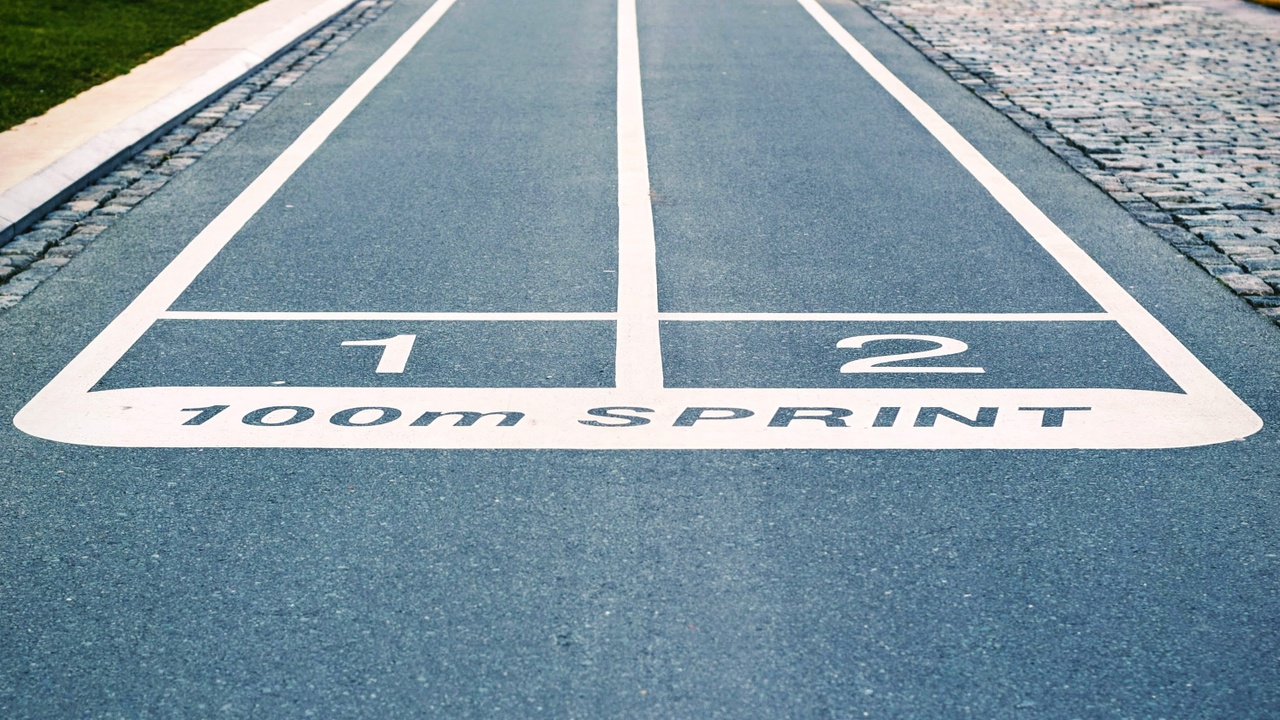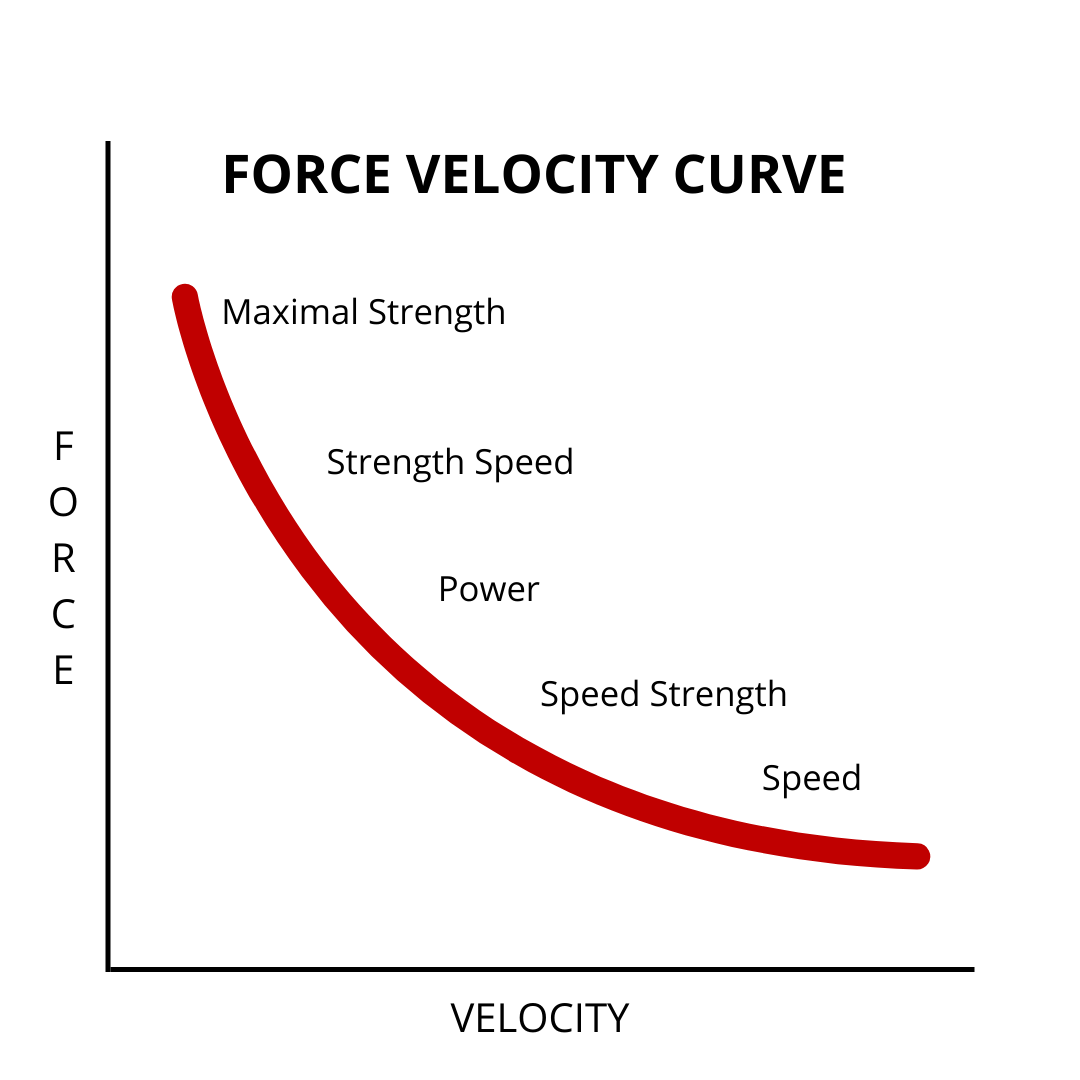Force/ Velocity Curve
Jul 01, 2022
Edited by: Danielle Abel
Force Velocity Curve Relationship
The force-velocity curve will affect neuromuscular adaptations for athletes. For example, moving really fast compared to moving with a great deal of resistance.
So it's extremely important to understand the needs of your athletes to help you create and customize an effective year-round training program.

Sprinting (low resistance) is at the very bottom of the speed category. Conversely, a powerlifter doing a 1RM movement (high resistance) is on the top in the maximal strength category.
Various types of training are in between these categories.
Maximal Strength:
- >90% 1RM
- High effort
Such as slow grinding reps or a 1RM for bench or squat
Strength-Speed:
- 4-6 RM loading
- Slower
Such as a box squat with 80% 1RM
Power:
- 30-80% 1RM
- Greater force and speed
Such as olympic lifting movements like the power clean or a loaded jump squat
Speed-Strength:
- Dynamic effort
- Explosive strength
Such as 8 sets of 3 reps with 50% load
Speed:
- Max velocity and low resistance
Such as jumping or cutting, throwing, or sprinting
How does this apply to training decisions?
We want to program from general training in the off-season to more sports-specific training as season or competition approaches.
Example: Powerlifter in the off-season
- Hypertrophy work
- Dynamic effort work
- Goal: Drive different adaptations
Example: Powerlifter approaching competition
- Shift programming to emphasize more sport-specific exercises
- Singles, doubles, and triples close to competition weight
- Goal: Prepare for competition weight
Max Effort Training:
Typically you'll keep low volume, so training adaptations promote improved neural drive, motor unit recruitment, and type II muscle fiber hypertrophy.
Speed Training:
Training adaptations include intra- and inter-muscular synchronization, rate coding, and rate of force development. These adaptations are transient unless they are continually trained.
Overall Concept:
- Training at each zone will shift that zone on the graph toward the desired goal (ex: increased strength or increased speed)
- Training adaptations are very specific, so it's important to be strategic & specific with your programming to maximize athlete training outcomes.
Support & Courses Available
Ready for even more support? Our Program Design 101 Course teaches you exactly how to organize an annual training plan and provides sport-specific examples, and even includes done for you programming templates by phase. Click the link here to check it out.
Stay connected with news and updates!
Join our mailing list to receive the latest news and updates from our team.
Don't worry, your information will not be shared.
We hate SPAM. We will never sell your information, for any reason.

